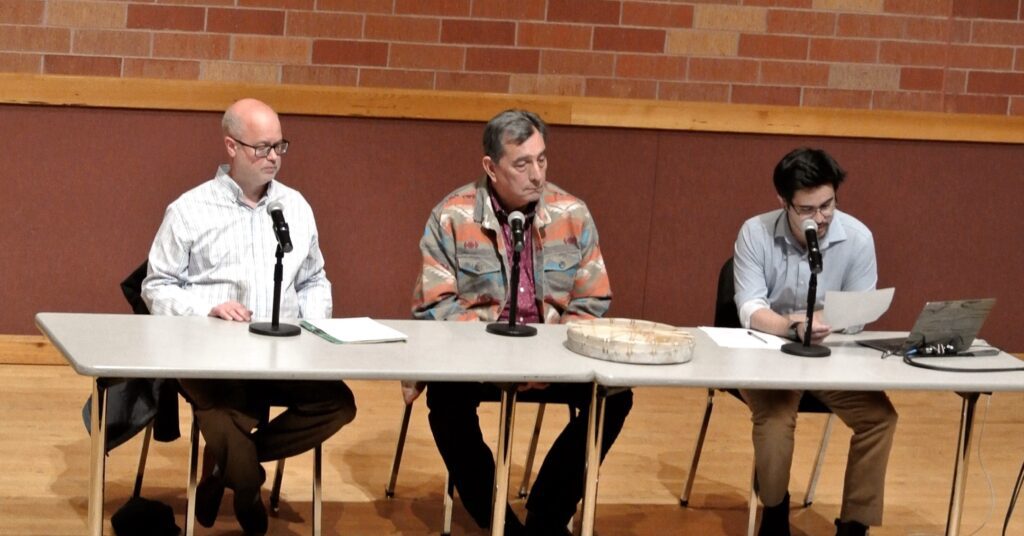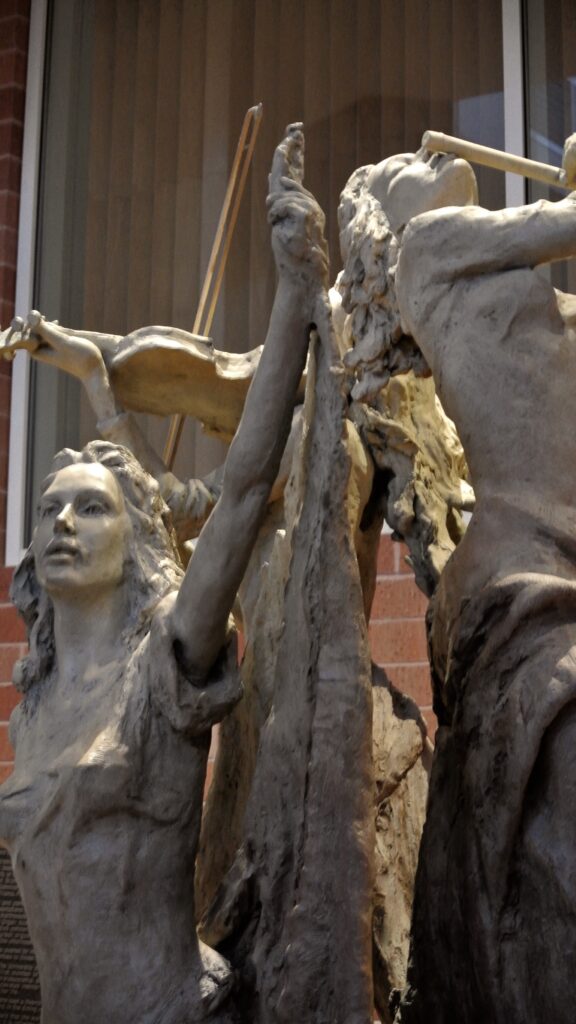In the clouds
a college girl's guide
Photo Taken by Avery Cloud

The Stories and Journey of ‘Wahzhazhe (A Song for My People),’ hosted by the Catlett School of Music at the University of Oklahoma on March 5, drew students to Pitman Recital Hall for a unique storytelling experience through Osage music.
Three panelists sat down on the evening of March 5 to discuss the cultural importance of Osage music in Killers of the Flower Moon. This interview-style event provided an outlet for cultural representation while highlighting powerful storytelling embedded in Osage music, both in the in Osage tradition and film.

Photo Taken by Avery Cloud
Panelist Mo Pair said Osage music helped enhance the film’s historical and cultural accuracy. “These songs link us to our ancestors,” said Osage native Scott George. “They hold the stories and emotions of our people.”
Mo Pair noted, “We also discussed the tensions involved in representing sacred music in general and its cultural significance in a mainstream media light.”
Abigail Nickell, a student who attended the event, said she was moved by the deep meaning behind the songs.
“I never realized how much history and emotion are incorporated into Osage music,” she shared. “Hearing the panelists talk about what these songs mean to their community was moving.”
Panelist Dr. Yamane emphasized that director Martin Scorsese collaborated with Osage locals throughout the film’s making to ensure the film’s music was accurate and appropriate.
They noted that Hollywood and society often misrepresent Indigenous cultures, but that Killers of the Flower Moon took a collaborative approach to authenticity. To close the event, those in attendance were greeted with a live Osage song performance, a powerful experience that connects the present to the past in the music of the film.
“These are not sing-along songs,” Nickell said. “They are speaking for the Osage people.”
The panel reinforced the significance of Indigenous-led storytelling, showing that Osage history and culture need to be heard in both film and society. The conversation also delved into the emotional undercurrents of the songs, including those used in Killers of the Flower Moon in scenes of grief and sadness.
Mo Pair explained how these songs are passed down through generations, carrying the weight of all of Osage history and heritage.
Dr. Yamane reflected on the impact of hearing these stories firsthand. “It made me think about how much has been taken from Indigenous communities and how important it is to honor their cultural traditions,” he said.
The event highlighted the power of music as an outlet for storytelling, affirming that Osage’s voices remain prominent in the retelling of their history.
